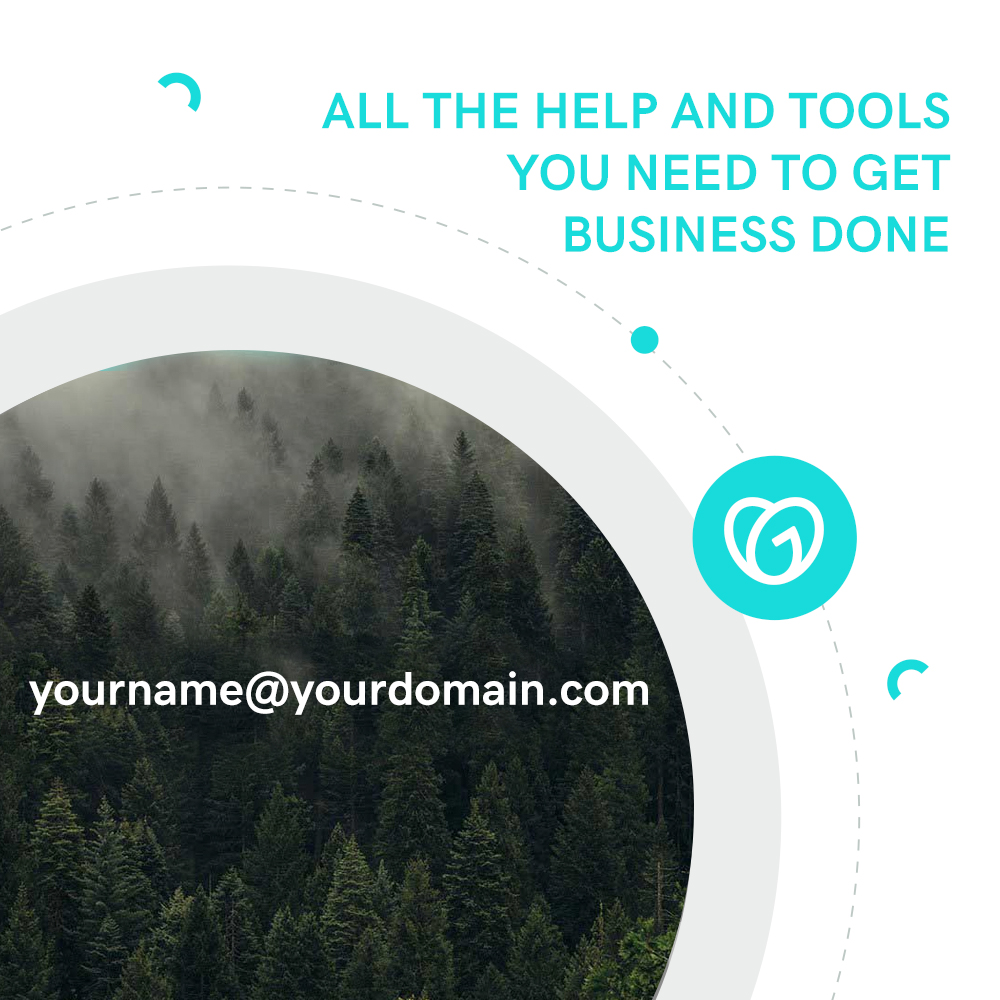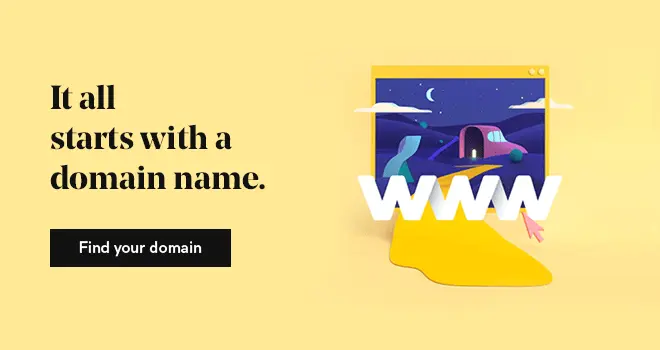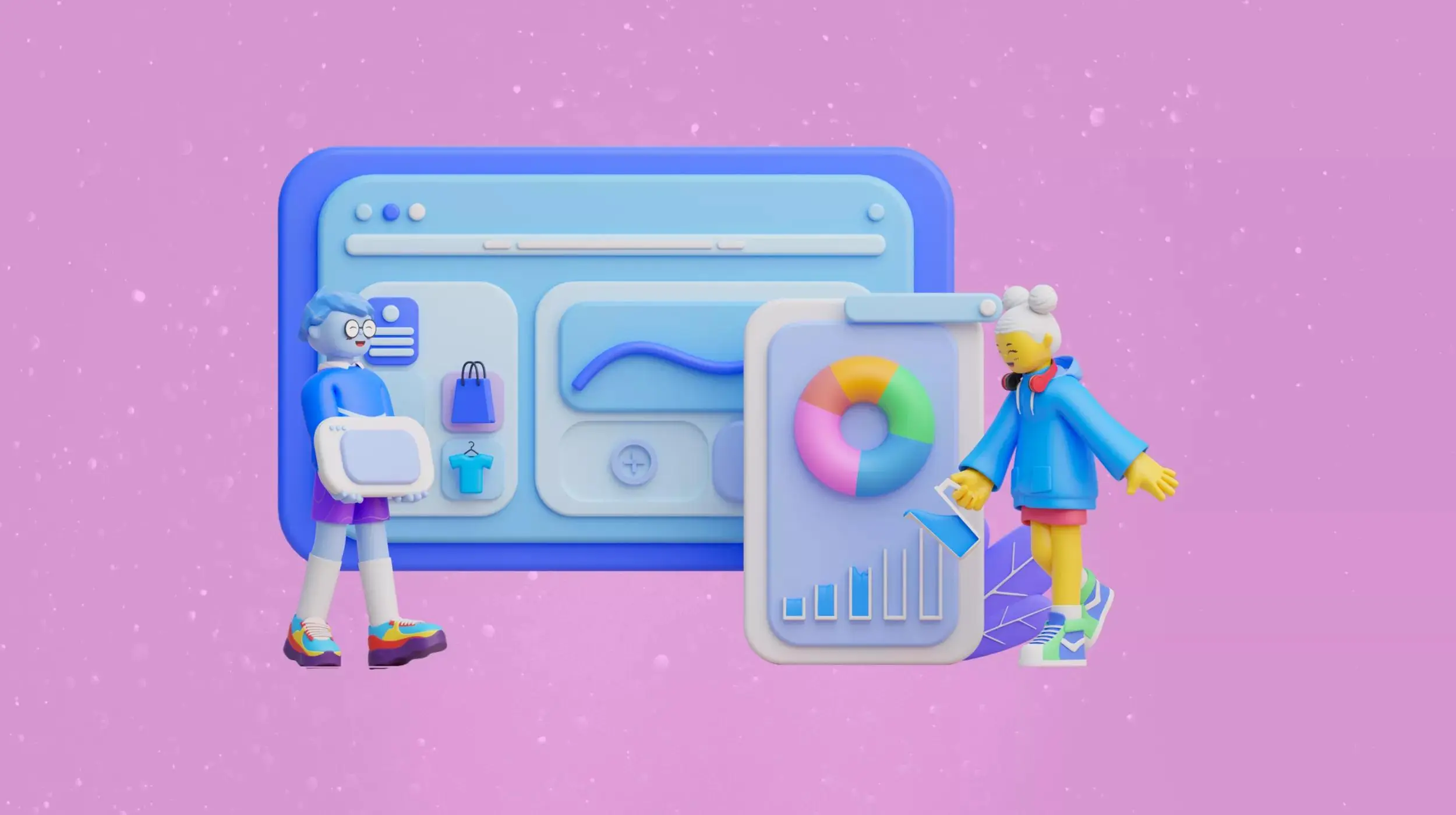Dreaming about starting an online store, but are held back by a lack of funds or experience? The good news is, that you can break into the world of eCommerce without inventory, shipping headaches, or a big upfront investment. Dropshipping is the perfect entry point for beginners who want to sell products online without the risk of handling stock or dealing with logistics. It continues to grow as a popular business model for entrepreneurs to make money online.
This step-by-step guide will show you how to launch your dropshipping business for free—no experience, no inventory, just pure opportunity.
What is dropshipping?

Dropshipping is a popular e-commerce business model that allows you to sell products without holding any physical inventory. When a customer makes a purchase through your online store, you buy the item from a third-party supplier, who then handles the packaging and ships it directly to the customer. This eliminates the need for you to manage product storage, packaging, or shipping logistics.
In summary, the process works as follows:
- A customer places an order on your online store.
- You buy the product from a supplier after receiving the order.
- The supplier ships the product directly to the customer on your behalf.
This streamlined approach reduces upfront costs and inventory risks, making it an appealing choice for entrepreneurs looking to start an online business with minimal investment and earn a passive income.
However, while dropshipping can be a flexible and low-cost way to start a business, it also has its challenges. Some challenges of the dropshipping model include finding reliable dropshipping suppliers, managing inventory and shipping and maintaining customer satisfaction. But with careful planning and a commitment to customer service, dropshipping can be a successful and fulfilling business model.
What does a dropshipping model consist of?
A dropshipping model relies on three key components:
1. Supplier
The supplier plays a crucial role by providing the products and managing the shipping process. They maintain the inventory and, when an order is received, they package and ship the product directly to the customer. Selecting a reliable supplier is key to ensuring timely delivery and consistent product quality.
2. Online store
This is the platform where customers browse and purchase products. It could be your dedicated website on platforms like Shopify, WooCommerce, or a seller account on online marketplaces such as eBay or Etsy. Your online store serves as the front end of your business, where you display product details, process orders, and manage transactions.
3. Customer
The customer is the end user who makes a purchase through your store. Your responsibility is to provide an excellent buying experience by offering clear product information, responsive customer service, and effective marketing. Satisfied customers are key to driving repeat sales and building a successful dropshipping business.
Your main responsibilities in the dropshipping model are:
- Selecting products to sell.
- Marketing your store to attract customers.
- Providing excellent customer service.
- Managing your store's operations, such as updating product listings and prices.
Meanwhile, your supplier handles inventory management, packing, and shipping.
How does dropshipping work?
The dropshipping business model works by connecting you (the store owner), your customer, and your supplier through technology.
When a customer places an order on the your website, you will purchase the product from your supplier and pass them your customer's shipping information. The supplier ships the product directly to your customer.
This process is made possible through the use of e-commerce platforms like the GoDaddy E-Store and apps that automate processes such as the ordering, payment and shipping. By using dropshipping, store owners can focus on marketing and promoting their products, while the supplier handles the rest.
How to start a dropshipping business without experience?
You don’t need a big budget or prior knowledge to start a dropshipping business. With the right strategy and tools, you can build a business from scratch, even if you’ve never run an e-commerce store before. Follow these simple steps to get started without spending much money:
1. Choose a niche
A niche is a specific category or segment of products you want to sell. Choosing the right niche is essential, as it determines your target audience and the types of products you’ll offer. Think of it as finding the right "fit" for your business. Here's how to select a profitable niche:
- Find something you’re passionate about: It’s easier to market and promote products you enjoy or have an interest in. This will help you stay motivated, especially in the beginning.
- Check for demand: You want to pick a niche that people are actively searching for. Use free tools like Google Trends to see if people are looking for the types of products in your niche. This will also show seasonal trends, which can help in product selection.
- Consider product price and margins: While passion is important, you also need to ensure that your chosen niche allows for profitability. Products with a higher price tag usually offer better profit margins.
Examples of profitable niches:
- Fitness gear (e.g., resistance bands, yoga mats)
- Tech accessories (e.g., phone cases, wireless chargers)
- Home décor (e.g., wall art, indoor plants)
- Pet products (e.g., pet grooming tools, pet beds)
These are just a few examples, but the possibilities are endless. The key is to find a niche that balances personal interest and market demand.
2. Perform market research to identify target audience, products and competitors

Market research involves studying consumer behavior, evaluating potential product demand, and identifying potential suppliers. It is crucial to understanding who will buy your products and who your competition is. This process helps you make informed decisions about your products, pricing, and marketing strategies.
Tools like Google Trends, Keyword Planner, and consumer surveys can help you gain valuable insights into what people are searching for and what products are selling well.
Here's how to conduct your market research:
a. Identify your target audience
Understanding who your customers are is fundamental to creating a successful dropshipping business. Ask yourself:
- Who are they? (age, gender, location, lifestyle)
- What do they need? (solve a problem or fulfill a desire)
- Where do they shop? (online behavior, platforms they use)
Use social media and customer surveys to gather insights. Tools like Facebook Audience Insights or Google Analytics can also help you understand audience demographics.
Finding the right niche and target audience is key to the success of your dropshipping business.
b. Research popular products
Once you know your target audience, find out which products they are most likely to buy. Use platforms like AliExpress, Amazon, or eBay to explore trending products in your niche. Social media platforms like Instagram and Pinterest also help identify popular product trends through hashtags and posts.
c. Analyze competitors
Look at other dropshipping stores in your niche to understand what they are offering, how they price their products, and what marketing strategies they use. This analysis will help you find gaps in the market or areas where you can do things better. Key points to analyze:
- Product range: What types of products are they selling? A quick search on Google, eBay or Amazon can help you discover who is selling the same or similar products as you.
- Pricing: Are they charging too much or too little for similar items?
- Marketing: How do they promote their products? (social media ads, SEO, influencer marketing)
- Customer service: What kind of support do they offer? Do they have a clear return and refund policy?
Use tools like SimilarWeb and SEMrush to analyze your competitors' online presence, see where their traffic is coming from, and identify areas where you can differentiate yourself.
By researching your competitors, you can identify ways to differentiate your store and offer better value to your customers.
3. Find a reliable supplier
Your supplier is crucial to the success of your dropshipping business. A reliable supplier provides high quality products, and ensures that your customers receive their products on time and in good condition, which helps maintain your store's reputation. A bad supplier, on the other hand, can harm your reputation and lead to customer complaints and returns.
Here's how to find a trustworthy supplier:
- Use Trusted Platforms: Platforms like AliExpress, Oberlo, and CJ Dropshipping are popular sources for finding dropshipping suppliers. They provide access to a wide variety of products, and many of them have reliable shipping and delivery options.
- Check Reviews: Always look at customer feedback and ratings to gauge the quality of the supplier. Positive reviews indicate that other entrepreneurs have had good experiences working with them, which builds trust.
- Test Communication: Contact potential suppliers to test their communication skills. Pay attention to how quickly they respond to your inquiries and whether they provide clear, helpful answers. A supplier that is responsive will help ensure smooth operations when you run into issues.
- Ensure Shipping Times Are Reasonable: Customers expect fast shipping, so it’s important to select suppliers that can fulfill orders quickly. Long shipping times can lead to customer dissatisfaction and increased refund requests. Look for suppliers with warehouses in regions that offer quicker shipping options.
To choose the right supplier, consider factors such as product quality, pricing, shipping time, and customer service. Research the suppliers online, read reviews and product descriptions, and compare prices. Reach out to the suppliers and ask questions about their product and services. Consider visiting the supplier's website and looking at the quality of the specific products they offer.
You also need to look into the supplier's shipping policies. Make sure they offer fast and reliable shipping products and that they provide tracking information to customers. You should also consider their return policy and whether they offer a warranty or guarantee on their products.
Where to find suppliers?
Here’s a list of platforms to find suppliers and contact them from:
- AliExpress: A popular platform that offers a large selection of products at competitive prices. It is owned by Alibaba.
- Wholesale Central: A directory of wholesalers and suppliers where you can find products in various categories.
- Doba: A platform that connects dropshippers with suppliers and offers a variety of products for sale.
- SaleHoo: A directory of suppliers and wholesalers that offers a large selection of products across multiple categories.
- MegaGoods: A wholesaler that specializes in electronics and other gadgets.
- Global Sources: A platform that offers a large selection of products from Asian suppliers.
- DHgate: A B2B marketplace that offers a large selection of products from Chinese suppliers.
- TopTenWholesale: A directory of wholesalers and suppliers that offers a variety of products across multiple categories.
Finally, it's important to establish a good working relationship with your supplier. This can help ensure that you receive the best products, service, and customer support. Consider partnering with a supplier that offers dropshipping services and has experience working with online retailers. Good communication is key, so make sure to keep your supplier informed of any changes to your business and be responsive to their needs.
4. Create your online store

Building your online store is easier than ever, and you don’t need a big budget to get started. You can create your store using platforms like GoDaddy’s Website Builder. Here's how to get started:
1. Pick a domain name
Your domain name is the online address for your store. It should be simple, memorable, and related to your niche. For example, if you’re selling fitness gear, you might choose something like FitGearStore.com. Keep it short and easy to spell, and consider adding keywords related to your products. Select a registrar like GoDaddy. Registrars manage the domain registration process, acting as intermediaries between registries and end-users.
2. Choose a Website Builder plan
The GoDaddy E-Store offers several plans to choose from, so you can pick one that suits your needs and budget.
3. Design and customize your store
Use easy-to-navigate templates provided by website builders like GoDaddy. These templates allow you to create a professional-looking store without needing any coding skills. Focus on user experience: make sure your website is easy to navigate, mobile-friendly, and visually appealing. Once you've chosen your template, you can customize it with your own images, own brand guidelines, and content.
4. Add product pages
Each product in your store should have its own dedicated page. Include clear product descriptions that highlight the benefits and features, and use high-quality images to showcase your products. Customers can’t touch or feel the product, so clear images are essential for building trust.
GoDaddy has you covered with WordPress websites and Quick Start with the wizard that makes installation easier.
Building an online store for your dropshipping business is a crucial step in launching your business. One of the simplest ways to set up a store is by using a website builder such as GoDaddy. With GoDaddy, you can easily create a professional-looking store even if you don't have any technical skills. Here's a brief overview of the steps involved in building a store with GoDaddy:
Easily create an online store that speaks to customers in their language, boosts your sales, manages your inventory and so much more.
Building your online store with GoDaddy is straightforward, and you can launch your business quickly and easily. With the right marketing and sales strategies in place, you can start earning a profit from your dropshipping business. Watch the below tutorial to learn how to build your store step by step:
5. Choose products and set competitive prices
Once your store is up and running, you need to select the products you want to sell. Here's how to do it effectively:
- Pick products that fit your niche: Choose products that align with your chosen niche. For example, if your store focuses on eco-friendly products, make sure the items you sell are sustainable or environmentally friendly. This ensures your offerings are consistent and targeted at the right audience.
- Set fair prices: Research what competitors are charging for similar products to ensure that your prices are competitive. Your goal is to strike a balance between profitability and affordability. Consider factors like your supplier costs, shipping fees, and market demand. Be mindful of your profit margin but also ensure that your prices are reasonable enough to attract customers.
6. Set up payment methods
To ensure your customers can easily and securely pay for their purchases, it’s essential to set up reliable payment methods. When it comes to setting up payment methods, there are many options available, such as credit card and debit card payments, PayPal, Fawry, and Paymob. Offering multiple options can increase your chances of making a sale. Here’s how to do it:
- PayPal: PayPal is a widely used and trusted payment method. It’s easy for customers to use, and it’s recognized for offering secure transactions. Make sure to link your PayPal account to your online store to start accepting payments.
- Credit Cards: Allow customers to pay via credit cards, which is one of the most popular methods for online shopping. Use a payment gateway like Stripe or Square to accept card payments safely.
- Security: Implement SSL (Secure Sockets Layer) encryption to ensure your payment process is secure. This makes sure that customer data is protected during the checkout process. Customers are more likely to buy from a store that appears trustworthy and offers secure payment options.
7. Register your dropshipping business
Starting a dropshipping business in the UAE can be a bit different than starting a business in other countries. The process usually involves obtaining a trade license, registering your business with the Department of Economic Development (DED), and opening a bank account.
To obtain a trade license, you need to have a physical office space, which can be rented or purchased, and must be located in a commercial area. The DED will then issue the trade license, which is valid for one year and must be renewed annually.
Once the trade license is obtained, you can register your business with the DED and obtain a Commercial Registration Certificate. This certificate confirms that your business is legally recognized in the UAE and can engage in commercial activities.
Finally, you'll need to open a bank account in the UAE. The account will be used to manage the financial aspects of your business, such as processing payments, receiving funds, and paying bills. Some banks may require additional documentation, such as a copy of your trade license and passport.
It's important to note that rules and regulations regarding business setup in the UAE can change, so it's recommended to seek professional advice from a lawyer or accountant.
8. Develop a marketing plan
Marketing the dropshipping store is an important aspect of starting and growing a successful business. To market the store, you have a variety of options, each with its own advantages and disadvantages. Here are some effective marketing strategies you can consider:
- Social media marketing - marketing on Social media platforms like Facebook ads, Twitter, Tiktok, and Instagram provide an opportunity to reach a large number of potential customers and engage with them. You can use social media to promote your products, share updates, and respond to customer inquiries. You can also run social media advertising campaigns to target specific audiences and drive sales.
- Influencer marketing - One of the effective ways to market your dropshipping store is by partnering with influencers. Influencer marketing refers to the promotion of products or services through individuals who have a strong and loyal following on social media platforms like Instagram, TikTok, and YouTube. You can reach out to influencers who align with your target audience and ask them to promote your products to their followers.
- Content marketing involves creating and sharing valuable, relevant, and consistent content with your target audience to attract and retain customers. This can be in the form of blog posts, tutorials, infographics, videos, and podcasts. By providing valuable information, you can establish your brand as a trusted authority in the dropshipping niche and drive traffic to your website.
- Email marketing - Personalized email marketing involves sending promotional emails to your customers and subscribers. You can use email to promote new products, offer discounts, and provide helpful information about your products. You can segment your email list based on subscriber behavior and preferences to create personalized and relevant campaigns. It is vital that you know how to write professional emails before you send out your campaigns.

- Paid advertising - Paid advertising allows you to target specific audiences, reach new customers and increase your online visibility. This can be done through platforms like Google AdWords, Facebook, and Instagram. You can create ads for your products and target specific audiences based on factors like demographics, interests and behaviors.
- Search engine optimization (SEO) - Optimizing your store and its content for search engines to rank higher and attract organic traffic.
- Referral Marketing: Referral marketing involves incentivizing your current customers to refer new customers to your dropshipping store. You can offer discounts, free products, or other rewards to encourage referrals. This can be an effective way to drive new business and build brand loyalty among your existing customers.
Regardless of which strategies you choose, it's important to be consistent and continually track your marketing efforts to see what's working and what's not. Consider starting small and scaling up as you gain more confidence and experience.
Also, it's crucial to understand your target audience and their preferences in order to create effective marketing campaigns that resonate with them. As with any business, marketing requires effort and investment, but the reward can be a steady stream of customers and sales for your dropshipping store.
A solid marketing plan is key to attracting customers to your store. While paid ads are effective, you can also utilize free strategies to start driving traffic to your store. Here are some marketing tactics you can implement for free:
- Social Media: Social media platforms like Instagram, Facebook, and TikTok are great tools for promoting your products. Create engaging posts, use hashtags, and share behind-the-scenes content to connect with your audience. You can also collaborate with influencers or run giveaways to expand your reach.
- SEO (Search Engine Optimization): Optimize your product pages by using relevant keywords. This helps your store appear in search engine results when customers search for products in your niche. Include high-volume keywords in your product descriptions, titles, and meta tags. SEO can be time-consuming, but it’s a free way to boost your store’s visibility.
- Email Marketing: Collect emails from customers who visit your store. Offer them a discount or freebie in exchange for their email address. Once you have a list, send them regular updates about new products, special promotions, and store news. Tools like MailChimp offer free plans for email marketing, making it easy to stay connected with your audience.
GoDaddy Websites + Marketing is an all-in-one solution that empowers every idea, business, side hustle, or nonprofit cause to claim their place online and look great in all of the places that matter.
9. Launch and promote your store
Once your store is set up, it’s time to launch! Here’s a checklist to ensure a smooth launch:
- Check Your Website: Before going live, ensure that your website is fully functional. Test the checkout process, payment methods, and links to ensure everything works smoothly. Make sure that the product pages display correctly, and check for any spelling or grammatical errors.
- Announce Your Launch: Share the news of your store’s opening on your social media platforms. Ask your friends and family to support you by sharing the news. You can also consider creating an announcement email or post that highlights the benefits cf your store and what makes it unique.
- Run Free Promotions: To attract your first customers, offer promotions like discounts or giveaways. This could be as simple as a 10% discount on the first purchase or a "buy one, get one free" offer. These types of promotions can create excitement and encourage people to visit your store.
10. Optimize and continuously evaluate and improve
After your store launches, the work doesn’t stop there. It’s important to regularly optimize your store and adjust based on customer feedback and business metrics. Here’s how to continuously improve:
- Use Google Analytics: Set up Google Analytics to track important metrics like website traffic, customer behavior, and conversion rates. This data helps you understand what’s working and where you need to make changes. For example, if you notice a lot of visitors but few purchases, it might indicate that you need to improve your product pages or streamline your checkout process.
- Test New Products: Regularly introduce new products to see what resonates with your customers. Look for trends in your sales and customer preferences. If a product sells well, you can increase stock or promote it more heavily. If something isn’t selling, consider replacing it with something new.
- Improve Product Pages and Marketing: Based on customer feedback, update product descriptions, images, and prices. If customers mention shipping delays or product quality issues, address them promptly and improve your offerings. Keep refining your marketing strategy by testing different approaches to see what works best.
It is important to regularly measure and optimize your store's performance to ensure growth and success. Here are a few key areas to focus on:
- Sales: Track the number of sales you are making and compare them against your goals. If sales are low, identify areas for improvement such as product offerings, marketing strategies, or checkout process.
- Conversion rate: This refers to the percentage of visitors who make a purchase. If your conversion rate is low, consider making changes to your website design or customer service approach to improve the customer experience.
- Customer feedback: Regularly gather feedback from your customers to understand what they like and dislike about your store. Use this information to make improvements and enhance customer satisfaction.
- Product performance: Analyze the performance of each specific product in your store and make adjustments to your product offerings as needed. This may involve discontinuing low-performing products and adding new products that are in high demand.
- Advertising costs: Monitor your advertising costs and measure the return on investment (ROI) of your marketing campaigns. Make adjustments to your campaigns as needed to optimize ROI.
By following these steps, you can build, launch, and grow your dropshipping business for free, without needing any experience. With consistent effort and continuous improvement, you can attract customers and drive sales while managing a flexible, low-cost business.
What are the benefits of starting a dropshipping business?
Starting a dropshipping business offers several advantages, especially if you’re new to eCommerce or working with a limited budget. Here are some key benefits:
1. Low startup costs
One of the biggest advantages of dropshipping is the low cost to get started. Since you don’t need to buy products upfront, your initial investment is minimal. You only pay for the products when a customer makes a purchase from your store. This eliminates the need for large inventory purchases, making it easier to start with limited funds.
2. Work from anywhere, anytime
Dropshipping offers flexibility in terms of location and working hours. Since you don’t need to manage inventory or physically ship products, you can operate your business from anywhere, whether you're at home, in a coffee shop, or traveling. The only things you need are a computer and an internet connection, allowing you to work on your schedule.
3. Pay suppliers after you get paid
Unlike traditional businesses where you pay for inventory upfront, with dropshipping, you only pay your supplier after your customer has paid you. This improves cash flow and makes it easier to manage finances. It also minimizes the financial risk, as you’re not stuck with unsold products.
4. No need to store inventory
Since you don’t handle inventory, you don’t have to worry about storage costs or organizing stock. The supplier takes care of storing the products, and they ship them directly to your customers. This allows you to focus on growing your business and serving your customers without the need for warehousing.
5. Easy to grow the business
Dropshipping makes scaling your business easier. You don’t have to worry about handling inventory, managing warehouse space, or fulfilling orders. As your sales increase, your supplier will handle more orders without requiring you to make additional investments in storage or shipping. This means you can scale your business without the logistical challenges that come with traditional retail.
6. Easily replace products that don't sell
Dropshipping allows you to easily change your product offerings. If a product isn’t selling well, you can quickly remove it from your store and replace it with another item. This flexibility lets you experiment with different products, adjust to market trends, and improve your store’s performance without significant risk or financial loss.
6. Low barriers to entry - get started easily
Star=dting a dropshipping business doesn’t require any specialized knowledge or experience. There are many resources available, including easy-to-use platforms like Shopify or GoDaddy’s website builder, that allow you to quickly set up an online store. Additionally, you can find suppliers, set up payment methods, and start marketing your products—all with minimal investment of time and money.
What mistakes to avoid in running a dropshipping business?
Starting a dropshipping business can be straightforward, but there are several pitfalls that can hinder your success. Avoiding these common mistakes will help you run a more efficient and profitable business.
1. Choosing the wrong niche
Picking the right niche is critical for your success. A niche that is too broad or too saturated may make it difficult to stand out. Choose a niche that you’re passionate about and that has demand. Use tools like Google Trends and social media to assess the popularity of your niche and ensure there’s a steady demand for the products you plan to sell.
2. Relying on one supplier
It’s tempting to rely on a single supplier to simplify operations, but this can be risky. If your supplier runs into issues such as stock shortages, shipping delays, or poor product quality, your business will be affected. Always have multiple suppliers in your network to ensure continuity of service and product availability
3. Ignoring product quality
Selling low-quality products can lead to negative reviews and poor customer satisfaction. Always prioritize product quality to maintain a positive reputation. Take time to research suppliers, read reviews, and, if possible, order product samples to ensure they meet the standards expected by your customers.
4. Poor customer service
Customer service can make or break your dropshipping business. If customers have trouble reaching you or if their issues are not addressed promptly, they will likely take their business elsewhere. Offer responsive, helpful support through email, chat, or phone, and ensure timely handling of customer inquiries and complaints.
5. Bad pricing strategies
Pricing too high or too low can both hurt your business. Pricing too high may scare customers away, while pricing too low can reduce your profit margins. Research competitors in your niche to find a price point that balances affordability and profitability. Don’t forget to factor in shipping costs and other expenses when setting your prices.
6. Ignoring shipping times
Shipping times are crucial in the eCommerce industry. Long shipping times can result in frustrated customers and negative reviews. Always ensure that your suppliers can deliver within a reasonable timeframe and communicate shipping expectations clearly to your customers.
7. Neglecting SEO and website design
Your website design and SEO practices directly impact your business’s visibility. A poorly designed website with slow loading speeds or a confusing checkout process will drive potential customers away. Similarly, neglecting SEO means your store won’t rank well in search engine results. Invest time in optimizing your site for both user experience and search engines.
8. Not having a marketing strategy
Without a solid marketing plan, your business will struggle to attract customers. Don’t rely solely on organic traffic—combine social media marketing, paid ads, email campaigns, and influencer partnerships to drive traffic to your site. Make sure to develop a strategy that fits your budget and goals.
9. Ignoring legal requirements
Running a dropshipping business without understanding legal requirements can lead to serious issues. Make sure you’re aware of taxes, business licenses, and consumer protection laws in your region. If you’re unsure, consult with a legal professional to ensure your business complies with all regulations.
10. Weak product descriptions
Your product descriptions are key to convincing potential customers to make a purchase. Don’t simply copy-paste descriptions from suppliers—craft unique and detailed descriptions that highlight the features, benefits, and quality of your products. High-quality images and well-written content can increase conversion rates significantly.
11. Not tracking business metrics
Without tracking essential business metrics, you won’t know how well your store is performing. Key metrics to monitor include:
12. Conversion rates
Tracking key business metrics like conversion rates, average order value (AOV), customer acquisition cost (CAC), and return rates is essential for understanding how well your dropshipping business is performing.
Conversion rates help you measure how many visitors to your site are making purchases, while AOV shows you how much customers spend on average per order. Monitoring CAC allows you to determine how much you’re spending to acquire each new customer, and keeping an eye on return rates helps you identify potential issues with product quality or customer satisfaction.
13. Underestimating competition
The dropshipping industry is highly competitive. Don’t assume that success will come easily—conduct thorough research on your competitors and their strategies. Learn from their successes and mistakes, and find ways to differentiate your business.
14. Handling returns poorly
Handling returns and exchanges is a normal part of any business. However, a poor return process can result in lost customers and negative reviews. Clearly communicate your return policy, and work with your suppliers to streamline the process. Make sure it’s easy for customers to return products and get their money back if necessary.
15. Expecting instant success
Dropshipping is not a get-rich-quick business. It requires time, effort, and continuous learning. Don’t expect to see immediate results—focus on building a solid foundation, improving your marketing, and optimizing your operations. Patience and consistency are key to long-term success.
Best dropshipping selling channels
When choosing the best platform to sell your dropshipping products, each option comes with its own pros and cons. Let's take a closer look at some of the most popular selling channels.
1. eBay
eBay is a global marketplace with millions of active users, making it an excellent platform for reaching a wide audience. The flexibility in pricing—whether through auctions or fixed-price listings—gives sellers room to experiment with different sales strategies. Additionally, eBay’s built-in trust and reputation help ease customer concerns about making purchases, and the platform offers international shipping options, expanding your reach even further. However, eBay also comes with some drawbacks. The high level of competition can make it difficult to stand out, and the platform’s fees, including listing and final value fees, can eat into your profits. Moreover, maintaining positive feedback is essential for success on eBay, which requires excellent customer service. Additionally, the limited customization options for your store can make branding more difficult.
2. Amazon
It is one of the largest eCommerce platforms in the world, giving you access to a massive customer base. The credibility of Amazon helps instill trust in potential buyers, making it easier for them to make purchasing decisions. If you opt for Fulfillment by Amazon (FBA), the platform can handle your shipping and customer service, saving you time and effort. However, Amazon’s fees can be steep, including seller fees and fulfillment costs, and the competition is fierce, particularly from Amazon’s own products. Furthermore, sellers have limited control over pricing and branding, which can restrict your ability to stand out from the competition.
3. Etsy
It offers a unique opportunity for selling handmade, vintage, or custom products, allowing you to target a niche market. Etsy shoppers are generally loyal and focused on quality, and the platform provides built-in marketing tools to help you grow your business. The fees for listing and transactions are lower compared to larger platforms, and you face less competition than on Amazon or eBay. However, Etsy’s focus on handmade or vintage items means it may not be suitable for all types of dropshipping businesses. Additionally, it may not scale as well as larger platforms like Amazon, and the platform's specific guidelines may restrict certain product categories.
4. Facebook Marketplace and Shops
Facebook Marketplace is easy to use, and listing products is free, making it a cost-effective option for beginners. Shops also allow for integration with Facebook Ads, giving you additional marketing opportunities. However, these platforms are more suited for local selling, and you may face limitations in terms of global reach, particularly on Facebook Marketplace. The payment options are also more limited compared to platforms like PayPal or credit cards, and the more casual, less professional presentation of your store could impact customer trust.
Each platform offers its own strengths and weaknesses, so the best one for your dropshipping business depends on your specific needs and goals.
Alternatives to Dropshipping
While dropshipping is a popular choice for starting an eCommerce business, there are several other models that might suit different business goals and preferences. Let’s explore some alternatives:
- Print-on-Demand (POD)
is a business model where you create custom designs for products such as t-shirts, mugs, phone cases, and more. When a customer orders a product, it’s printed and shipped by a third-party supplier. This model requires no upfront investment in inventory, and you can offer unique, branded products. However, like dropshipping, you rely on suppliers for fulfillment, so quality control and shipping times can sometimes be less predictable. Additionally, you need to create attractive and marketable designs to stand out in a competitive market.
- Affiliate Marketing
It involves promoting other people’s products and earning a commission on each sale made through your referral link. This is a low-cost option to start a business as it doesn’t require you to handle products or customer service. Affiliate marketing is flexible, and you can promote a wide range of products in various niches. The main challenge with affiliate marketing is building a platform—such as a blog, YouTube channel, or social media presence—that attracts enough traffic to generate significant sales. You also have little control over product pricing or customer service. You can earn cash from sales when you promote GoDaddy on your site.
- Wholesale eCommerce
It is a model where you buy products in bulk directly from manufacturers or wholesalers at a discounted price and sell them individually to customers. This business model is great for those looking for more control over product pricing and inventory management compared to drop shipping.
While it can be more cost-effective in terms of per-unit price, it does require a higher initial investment to purchase inventory and manage storage and shipping. Wholesale eCommerce can be profitable, but it also involves more risk and upfront costs.
- Digital Products
It is another excellent alternative. Selling eBooks, online courses, templates, or downloadable software allows you to reach a global audience without the need for physical inventory. Digital products have low overhead costs since there’s no shipping involved, and you can sell them an unlimited number of times.
However, you need to invest time and effort into creating valuable content or resources, and the market for digital products can be highly competitive. Building a strong online brand and marketing your digital products effectively is key to standing out in this space.
Each of these alternatives to dropshipping offers unique benefits and challenges, so consider your interests, skills, and the level of involvement you want in your business when choosing the right model for you.
Starting a dropshipping business - Frequently Asked Questions (FAQs)
1. Is dropshipping halal?
Dropshipping is generally considered halal, as long as it adheres to Islamic guidelines, which focus on transparency, fair trade, and timely delivery. It is important to ensure that the products you sell are permissible in Islam and that the transactions are conducted ethically. As with any business model, it’s essential to avoid deceitful practices and ensure that customers are treated fairly.
2. Is dropshipping easy to start?
Yes, dropshipping is relatively easy to start, especially for those with no prior experience. With access to free tools, platforms, and step-by-step guides, anyone can begin a dropshipping business. Setting up your store and connecting with suppliers can be done quickly, and there are numerous resources available to help you through the process.
3. Is dropshipping worth it and profitable?
Dropshipping can be profitable if approached strategically. The key to success lies in selecting the right niche, working with reliable suppliers, and having a strong marketing strategy. While the profit margins may not be as high as other business models, the low initial investment and low risk make it an appealing option for many entrepreneurs. Success in dropshipping depends on your ability to attract and retain customers.
4- How to Handle Shipping and Customer Service in Dropshipping?
Shipping and customer service can be managed effectively by partnering with reliable suppliers and being transparent with your customers. Ensure that you provide clear and accurate shipping information, including delivery times. Communicate promptly with your customers in case of any issues or inquiries. Since you won’t handle the products directly, it’s essential to maintain good relationships with your suppliers and stay involved in the order fulfillment process.
5- How Much Does It Cost to Start a Dropshipping Business?
Starting a dropshipping business can be done for free using platforms like GoDaddy’s website builder, which offers a simple way to create an online store without needing prior technical skills. While there are no upfront costs for inventory, you may incur some expenses for marketing, domain registration, and premium apps or tools for managing your store. However, you can keep costs low by using free supplier directories and focusing on organic marketing strategies. GoDaddy’s Business Hosting plans can be the ideal option for you.
6- How to Find Suppliers for Dropshipping?
Finding reliable suppliers is key to running a successful dropshipping business. You can start by using popular supplier platforms like AliExpress, Oberlo, and CJ Dropshipping. These platforms connect you with verified suppliers who offer a wide range of products. Be sure to check reviews, test the supplier’s communication, and evaluate their shipping times before committing.
7- Can Dropshipping Make You Rich?
While dropshipping can generate a good income, it is unlikely to make you rich quickly. Success in dropshipping requires consistent effort, a strong marketing strategy, and the ability to adapt and learn from your mistakes. If approached with dedication and persistence, it can become a profitable business, but it’s important to set realistic expectations and understand that building a successful dropshipping business takes time.
How to start dropshipping: is it free to start?
Starting a dropshipping business can have costs associated with it, but it is generally considered a low-cost business model compared to traditional brick and mortar stores. Some costs to consider include setting up an online store, purchasing a domain name, paying for marketing and advertising, and subscription fees for e-commerce platforms. However, many e-commerce platforms, like GoDaddy, offer starter packages at low costs or even free trials. Additionally, there are ways to minimize costs by doing market research, choosing a reliable supplier, and effectively marketing your store. Overall, while there may be some costs involved, starting a dropshipping business can still be an affordable option for those looking to start an online business.
How many hours a week does dropshipping take?
Dropshipping can be as time-consuming or as passive as you make it. To start, you will likely spend a good amount of time researching products, setting up your online store, and marketing your business. However, once your store is up and running, the time commitment will depend on the volume of sales, the number of products you offer, and how much automation you set up. Some dropshippers spend only a few hours a week managing their store, while others may spend 40 or more hours per week. It really depends on your goals, and how much time and effort you are willing to invest. As a general rule, the more successful your business becomes, the more time you will need to invest in managing and growing it.
How to start dropshipping: what are the downside to dropshipping?
Starting a dropshipping business may seem appealing, but it's important to understand the potential downsides as well. Here are a few to consider:
- Limited control over the customer experience: Since you're relying on a supplier to fulfill orders, you may not have full control over the quality and timing of the delivery. This can lead to customer dissatisfaction.
- Margin compression: Due to competition and the nature of the dropshipping model, profit margins can be slim.
- Shipping costs and tracking issues: Shipping costs can be higher and tracking information may not always be accurate, both of which can impact the customer experience.
- Product quality and authenticity: The quality of the products you offer is only as good as the supplier you choose. Research your suppliers carefully to ensure you're offering high-quality products.
- Branding challenges: Building a strong brand can be difficult in the dropshipping model, as you may not have full control over the customer experience.
It's important to weigh these potential downsides against the benefits of starting a dropshipping business before making a decision.
Do dropshippers make money?
Dropshipping can be a lucrative business model for entrepreneurs who successfully navigate the challenges and obstacles. Many dropshippers make money by finding the right niche, sourcing reliable suppliers, effectively marketing their store, and continuously optimizing their operations. However, starting a dropshipping business also involves upfront costs such as registering the business, setting up a website, and advertising the store. Like any other business, the success of a dropshipping store depends on various factors such as market demand, competition, and effective management. While it is possible to make money through dropshipping, it also requires hard work, dedication, and continuous learning and improvement.
Is dropshipping worth it?
Whether dropshipping is worth it depends on the individual's goals and circumstances. On one hand, dropshipping products allows for a low-investment and low-risk way to start if you’re an entrepreneur or a small business. It eliminates the need for large amounts of capital for inventory, and the ease of scaling makes it a flexible option for entrepreneurs.

Think of dropshipping as renting vs buying a home. Starting a traditional e-commerce business is like buying a house, as you need to invest a lot of money upfront for inventory to get it on a wholesale price. Dropshipping, on the other hand, is like renting a home - it requires a lower upfront investment, but also limits the amount of control and potential profits you have.
On the other hand, the low barriers to entry also means that there is a lot of dropshippers in the market. Finding a profitable niche, building a strong brand, and managing customer satisfaction can be challenging. Ultimately, it's up to the individual to weigh the potential benefits and drawbacks of dropshipping to determine if it's the right choice for them.
How hard is it to start a dropshipping business?
Starting a dropshipping business can be both technically straightforward and financially accessible, but also challenging in other aspects. From a technical standpoint, the setting up and integration of a dropshipping store are relatively simple tasks, and can be done quickly with the help of e-commerce platforms and apps.
From a financial perspective, starting a dropshipping business requires less capital than starting a traditional e-commerce business. However, it also means lower potential profits and less control over the supply chain.

Think of starting a dropshipping business like climbing a mountain. The technical aspects of setting up a store can be considered a relatively easy hike, while the financial and competitive aspects can be compared to reaching the summit. It requires strategy, effort, and perseverance to find a profitable niche, build a strong brand, and manage customer satisfaction.
Overall, starting a dropshipping business can be a low-risk and low-investment business idea for entrepreneurs and business owners, but it also requires hard work and careful planning to be successful.
How to find a dropshipping business for sale?
Finding a dropshipping business for sale can be a great option for entrepreneurs who want to get into the e-commerce industry without starting from scratch. There are many existing dropshipping businesses for sale that offer a proven business model, business structure, existing customer base, a technical know-how, and an established business name.
From a technical standpoint, finding a dropshipping business for sale is as simple as searching online marketplaces, such as Flippa or Exchange, or reaching out to business brokers.
From a financial perspective, buying an existing dropshipping business can be a cost-effective way to get started, as it often comes with a lower risk than starting from scratch. However, it's important to thoroughly research the business, including its financials, customer purchases, sales tax, and supply chain before making a purchase.
Think of buying a dropshipping company like buying a house. You can save time and effort by moving into a pre-existing, furnished home instead of building one from the ground up. But, just like buying a house, you need to do your due diligence and inspect the property thoroughly before making a decision.
Overall, buying a dropshipping business can be a smart and efficient way to get started in the industry, but it requires careful research and due diligence to ensure a successful investment.
Editor's Note: This article was first published on October 17, 2024 updated on February 14, 2025. It also contains content written by Adem Asha.









